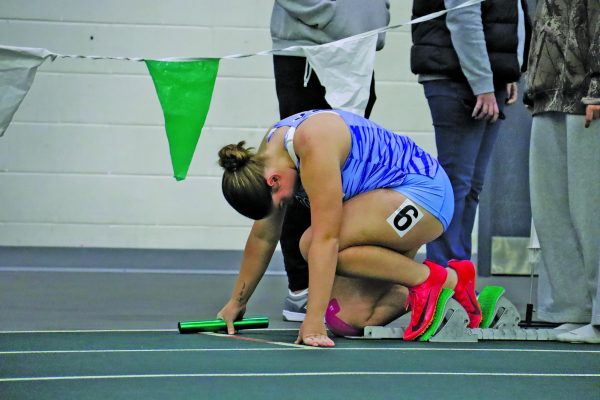LSC student-athletes discuss problems with training and gym space
Editor’s Note: Michael is an Electronic Journalism Arts at Lyndon State College. This article is part of a collaboration with Basement Medicine to better represent our unified community.
For all college athletes, year-round preparation for the season is a necessity. However, for athletes in the NEK (Northeast Kingdom) whose sports are played outside, training can often be a problem due to weather conditions, gym times, etc.
This is primarily the case for athletes in who play sports in the spring. Senior baseball player, Ryan Cordeiro, explained the immediate conflict that follows Lyndon State’s baseball team’s fall season.
“We’re enrolled in a strength and conditioning program following the season,” Cordeiro explained. “However, I feel that it can be better. The program itself is beneficial, but I feel that there’s not enough focus for our particular sport.”
LSC’s strength and conditioning program is for all teams at Lyndon. Athletes are required to attend workouts three days a week for 45 minutes to an hour. During the sessions, athletes work on running mechanics, flexibility and overall core strength.
“I just think we need to be doing more baseball-oriented lifting,” said Cordeiro, “When I was a freshman there was no strength and conditioning. It was easier for me to get stronger and better prepared for the season.”
While Cordeiro is concerned with how the strength and conditioning program will prepare he and his teammates for the season, he expressed how the biggest problem is getting time in the gym.
“Our batting cage is in the [Stannard] gym, which is where both of the basketball teams, volleyball team, lacrosse teams and men’s tennis team all practice,” said Cordeiro. “A lot of the times we can’t get in the gym to swing because other teams are in there for practices. In the end, that’s going to hurt us for our season.”
Cordeiro also explained how it would have made more sense for the batting cages to be put in Lyndon’s Rita Bole Gym, since that gym is mainly used for intramural games and strength and conditioning.
“It would be easier for us to work with Dr. Pfefferle on scheduling around strength and conditioning rather than working around practice schedules of a handful of teams,” said Cordeiro.
Another athlete with the same mindset as Cordeiro is senior two-sport athlete Kendrick Mills. In the future, Mills is hoping the strength and conditioning program finds a way to intensify the workouts for all athletes.
Mills’ busiest time of year is arguably February through March. Being on the basketball and lacrosse team, Mill’s seasons intersect.
“The hardest thing for me is staying healthy and preventing injuries,” said Mills. “It’s a lot for my body to take on, but I’ve been able to manage pretty well my last three years.”
As a spring athlete, Mills expressed concerns with the weather when it comes to preparing for the lacrosse season.
“Because we’re always indoors, it’s hard for us to get a feel for grass or turf,” Mills said. “The gyms are also too small and we don’t have enough room to do everything that we need to.”
Lyndon State fifth year senior Andre Eason, Jr. has experienced an interesting conflict with the athletic administration. Eason, who graduated with a degree in Applied Psychology and Human Services in 2017, was granted medical hardship, allowing him to return to school to play baseball for one more year and earn a second degree in Criminal Justice.
Eason explained how he remembers numerous times where he was restricted from working out in the offseason.
“I wasn’t treated like I was a student-athlete at this institution,” explained Eason. “If there are practices in [the gym], it’s impossible for us to get in to work out.”
Eason continued to explain how he wished some things were different for student-athletes: “I wish we could get a specific time to go in and work out. We can’t just go in and practice because most of the time slots are filled in.”
Lyndon State has a total of two racquetball courts that seem to hardly be used. “Turning one of those into a turf room for the athletes would be crucial,” explained Eason.






